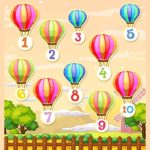Captivating Science Experiments for Kids
Science has a magical quality that captivates the curious minds of children. It’s like stepping into a realm of wonder where everyday objects transform into captivating experiments. Picture this: a group of young scientists, wide-eyed and giggling, as they witness the power of a simple touch in the pepper and soap experiment. The pepper flakes scattering across the water’s surface seem to come alive, as if putting on a whimsical dance performance. Science experiments for kids open up a world of wonder and curiosity, allowing them to explore the marvels of the natural world through hands-on exploration. These interactive science activities for elementary students not only engage them, but also spark their imaginations and ignite a lifelong love for scientific discovery.
The Pepper and Soap Experiment
Let’s start with a classic experiment that combines everyday household items to create an enchanting visual display. For this experiment, you’ll need a shallow dish or plate, water, pepper, and liquid soap.
Procedure:
Fill the shallow dish with water until it is nearly full. Sprinkle a thin layer of pepper evenly across the surface of the water. Gently dip your finger into the soap and then touch it to the centre of the water.
Observation:
Prepare to be amazed! As soon as the soap touches the water, the pepper will rapidly scatter, seemingly fleeing from the soap. The once still and motionless pepper flakes will dance and move across the water’s surface, creating a mesmerising effect.
Explanation:
This captivating phenomenon occurs due to a scientific concept called surface tension. Water molecules have a strong attraction to each other, creating a thin layer on the water’s surface. When soap is added to the water, it reduces the surface tension. This reduction causes the water to pull away from the soap, carrying the pepper flakes along with it.
The Black Paper Experiment
Now, let’s explore another intriguing experiment involving black paper and the magic of static electricity. This experiment will require black construction paper, a balloon, and wool cloth.
Procedure:
Cut the black construction paper into small, lightweight shapes such as triangles or squares. Rub the balloon briskly against the wool cloth for about 20 seconds.
Observation:
Hold the balloon close to the black paper shapes without touching them, and prepare to witness an extraordinary display. The black paper shapes will mysteriously jump and cling to the balloon, seemingly defying gravity.
Explanation:
The magic behind this experiment lies in static electricity. When you rub the balloon against the wool cloth, it accumulates a negative charge. The black paper shapes, on the other hand, remain neutral. Opposites attract, so when the negatively charged balloon comes close to the neutral black paper shapes, they are attracted to each other. This attraction creates an electrifying effect, causing the paper shapes to stick to the balloon.
Engaging kids in science goes beyond these two experiments. Interactive science activities for elementary students create an immersive learning experience, encouraging active participation and sparking their imagination. Here are a few more interactive science activities to inspire young minds:
Volcano Eruption: Create a volcanic eruption by combining baking soda, vinegar, and food colouring. Witness the fizzing reaction and watch the colourful eruption unfold. It’s a hands-on experience that will make them feel like real volcanologists, exploring the powerful forces of nature.
Homemade Slime: Mix glue and borax solution to create a stretchy and gooey slime. Explore the properties of polymers while having fun with this hands-on experiment. Let their creativity run wild as they experiment with different colours and textures, learning about the fascinating world of chemistry in a playful way.
Balloon Rockets: Construct a mini rocket by attaching a string to a straw and securing it with tape. Blow up a balloon, release the air, and watch as the rocket races along the string. This activity not only teaches the principles of motion and forces but also provides an opportunity for some friendly competition as kids experiment with different balloon sizes and straw lengths to achieve the fastest rocket.
Rainbow in a Jar: Layer different liquids with varying densities, such as honey, dish soap, water, oil, and food colouring, in a clear jar. Witness the formation of distinct layers and a beautiful rainbow effect. This captivating experiment introduces concepts of density, buoyancy, and immiscibility while creating a stunning visual display that will leave kids mesmerised.
Conclusion
So, let’s embark on a journey of scientific wonder with our little ones! By engaging them in interactive science activities, such as the pepper and soap experiment and the black paper experiment, we can unleash their imagination and foster a love for scientific exploration. Science experiments and science shows for kids provide a tangible and captivating way for young minds to grasp complex scientific concepts and develop a lifelong passion for exploration and discovery. And when it comes to providing a nurturing environment that embraces the wonders of early childhood education, EuroKids stands as a trusted partner. To learn more about us and our specially crafted curriculum, visit the nearest EuroKids centre today!















